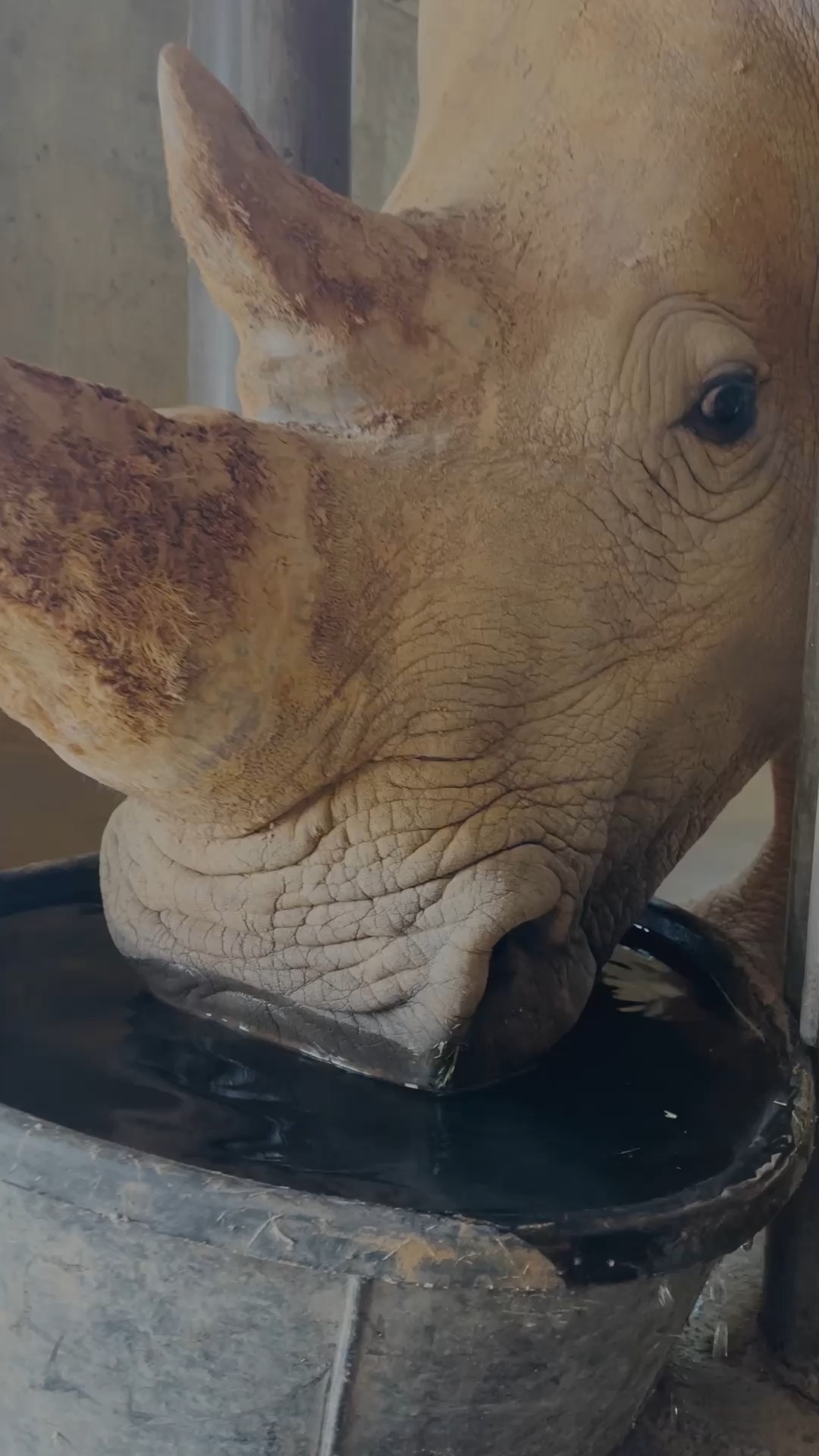- Even Southern White Rhinos have hydration goals: Understand their water needs and behaviors in captivity and the wild.
- The misnaming of the ‘white’ rhino: Discover the origins of the term and its relation to their physical traits.
- Rhino barn and keeper interactions: Explore the setup for safety and care in a zoo setting.
- Habitat and conservation efforts: Learn about the 40-acre environment and ongoing conservation strategies.
- Grazing habits: Examine their diet and how their anatomical features support it.
The Southern White Rhino, a magnificent creature of the African savannas, captivates with its robust presence and gentle demeanor. One fascinating aspect of these animals is their hydration goals, both in captivity and the wild. Water is essential to their survival, influencing many aspects of their behavior and physiology. In zoos, meticulous planning is involved in ensuring rhinos have access to fresh water and appropriate hydration environments. Similarly, in the wild, their water-seeking behavior is a crucial part of their daily routine, dictating migration patterns and social interactions.
The term ‘white rhino’ is a linguistic twist of history. Originally, Dutch settlers referred to these animals as ‘wijde,’ meaning ‘wide,’ a descriptor for their broad, square lips. This physical trait is perfectly adapted for grazing on grasses, as opposed to their black rhino counterparts with pointed lips suited for browsing leaves. The name was simply misinterpreted as ‘white,’ becoming an enduring identifier despite these rhinos’ grey appearance. This etymological quirk underscores the importance of clear understanding in scientific communities.
In zoo settings, rhino barns provide a controlled environment where keepers can interact with rhinos safely. The design includes bollards for protected contact, allowing keepers to conduct health checks and provide care without direct contact, which minimizes risk. These settings simulate aspects of their natural habitat, promoting physical and mental well-being. Providing enrichment activities that mimic natural behaviors, such as wallowing or mock grazing, supports their overall health.
Southern White Rhinos in zoos also enjoy expansive 40-acre habitats designed to encourage natural behaviors. These areas are crucial for maintaining their physical health and fostering behaviors seen in the wild. Conservation strategies are integrated into their management, focusing on breeding programs and genetic diversity. Protecting such vast habitats ensures that captive rhinos live in conditions as close to their natural environment as possible, an essential factor in global conservation efforts.
One cannot overlook the importance of their diet and how efficiently their body is adapted to grazing. The wide lips of the Southern White Rhino allow them to effectively consume large quantities of grass, their primary food source. This grazing facilitates nutrient intake necessary for their hefty size and energy needs. Their digestive system is designed to maximize the extraction of nutrients from fibrous plant material, a testament to their evolutionary success in the savanna.
Efforts to conserve the Southern White Rhino extend beyond captive breeding and habitat management. Poaching remains a significant threat, driven by demand for rhino horn. International collaborations focus on anti-poaching measures and reducing illegal trade. Education and community involvement are pivotal in changing perceptions and behaviors toward rhinos, ultimately aiding in their survival.
The significance of the Southern White Rhino in biodiversity and ecosystems cannot be overstated. Their role as mega-herbivores impacts vegetation patterns, influencing the structure of the savanna ecosystem. By maintaining open grasslands, they indirectly support numerous other species, maintaining ecological balance. Conservationists emphasize the ripple effect their survival has on broader environmental health.
Studying Southern White Rhinos not only enhances our understanding of these creatures but also contributes to broader zoological knowledge. The intersection of linguistics, ecology, and conservation presents a complex yet rewarding field of study. By exploring the hydration needs, naming history, zoo management, habitat conservation, and grazing habits of these rhinos, we gain insight into effective conservation strategies that ensure their continued existence.
As the world evolves, so does our approach to wildlife conservation. Southern White Rhinos remain at the forefront of this effort, embodying the challenges and triumphs of preserving our planet’s biodiversity. Through continued education, research, and international cooperation, we strive to secure a future where these magnificent animals thrive, embodying the resilience and beauty of nature.
*****
Source Description
Even Southern White Rhinos have hydration goals! 🦏💧 Why the name ‘white’ rhino? It’s not about the color—it’s a misheard word! The original Dutch term ‘wijde’ (meaning ‘wide’) refers to their wide, square lips—perfect for grazing! 🥬💋 So yes, it’s white rhino… but it’s really about the bite! This video was taken in the rhino barn, where the bollards serve as protected contact for the keepers! Don’t forget they have a 40-acre habitat to roam!


